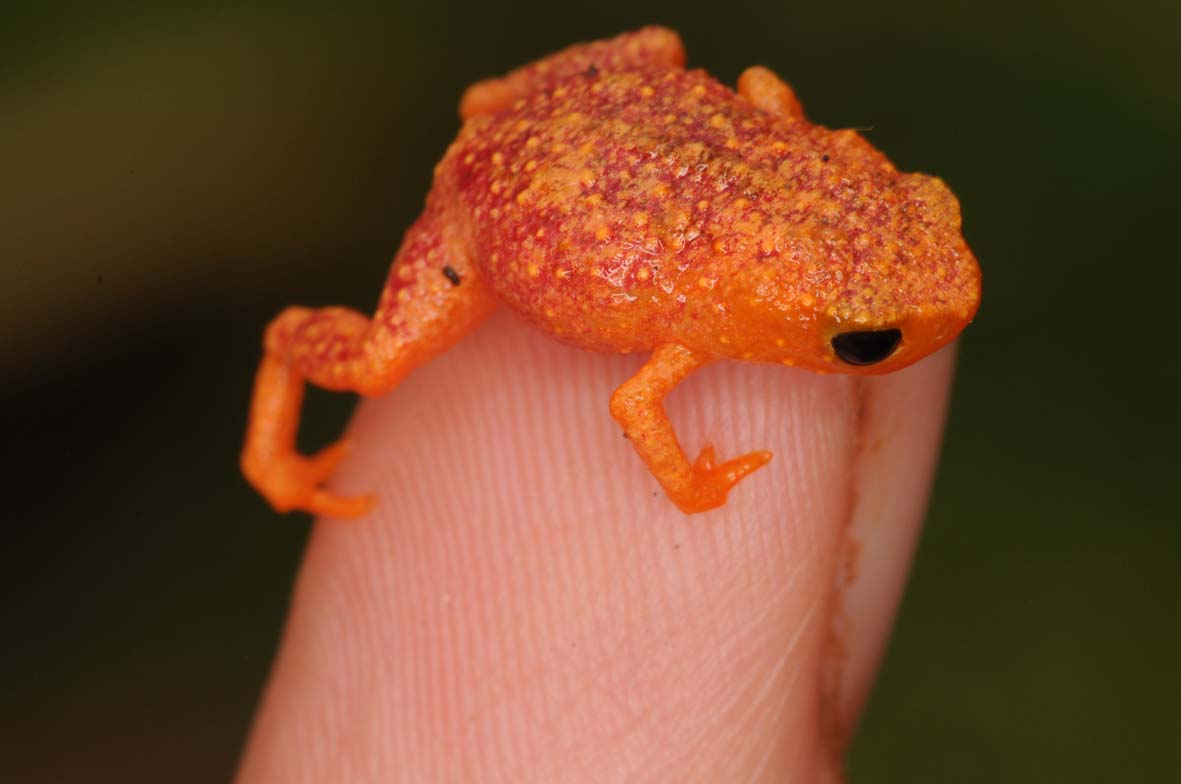Dr. Matthew Mason: Further Information...
University Physiologist Tel: +44 (0)1223 333829, Fax: +44 (0)1223 333840, E-mail: mjm68@cam.ac.uk
Goutte, S., Mason, M.J., Christensen-Dalsgaard, J., Montealegre-Z, F., Chivers, B.D., Sarria-S, F.A., Antoniazzi, M.M., Jared, C., Almeida Sato, L. & Toledo, L.F. (2017) Evidence of auditory insensitivity to vocalization frequencies in two frogs. Scientific Reports 7 (12121): 1-9.
 Pumpkin toadlets, found in the leaf litter of Brazil’s Atlantic forest, are among the smallest frogs in the world. Our team has discovered that two species of these tiny, orange frogs are unable to perceive the sound of their own calls. We demonstrated this through multiple lines of enquiry: the failure of the frogs to respond behaviourally to call playback, the lack of auditory brainstem response to the call frequencies, and finally the vestigial nature of the basilar papilla, the organ of the inner ear used to process high-frequency sound.
Pumpkin toadlets, found in the leaf litter of Brazil’s Atlantic forest, are among the smallest frogs in the world. Our team has discovered that two species of these tiny, orange frogs are unable to perceive the sound of their own calls. We demonstrated this through multiple lines of enquiry: the failure of the frogs to respond behaviourally to call playback, the lack of auditory brainstem response to the call frequencies, and finally the vestigial nature of the basilar papilla, the organ of the inner ear used to process high-frequency sound.
Most male frogs call to signal their presence to the opposite sex and find a mate, but this is costly: it could attract predators and parasites, and it uses up energy and time. One would think that if a signal is not perceived by its target audience, it would be lost through evolution. The discovery that these frogs are not sensitive to the sound frequencies of their own calls is a unique case in the animal kingdom of a communication signal persisting even after the target audience has lost the ability to detect it! Perhaps the frogs are using visual cues instead to communicate. The lack of sensitivity to their own calls in these pumpkin toadlets appears to be an example of evolution ‘in the making’.
When we started to consider how else these toadlets might communicate, we discovered that they fluoresce under UV light, revealing bright patterns (see Goutte et al., 2019).
Please click here to access this paper from the Nature Scientific Reports website.
